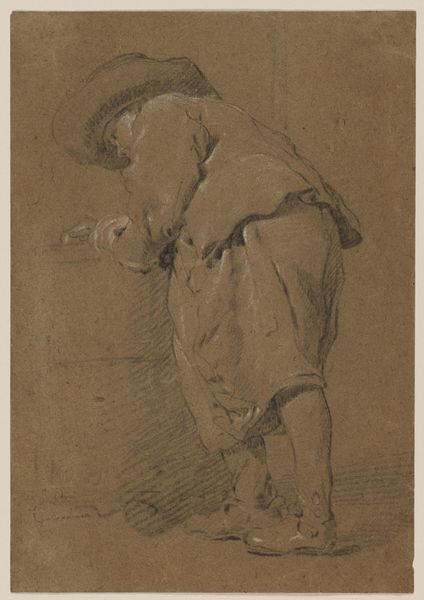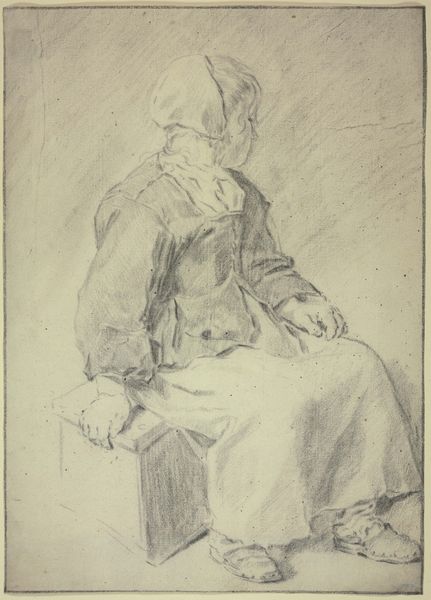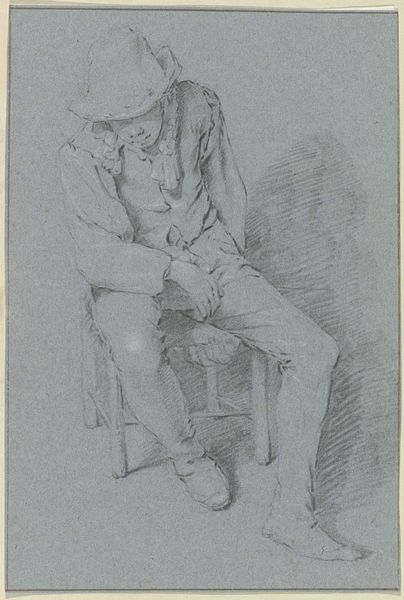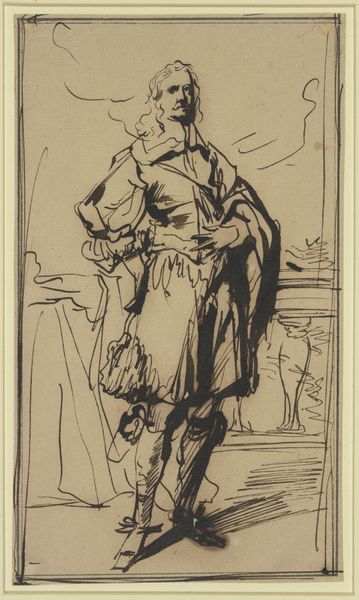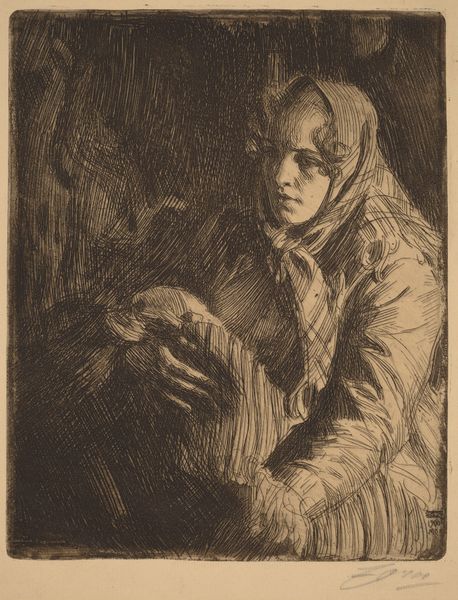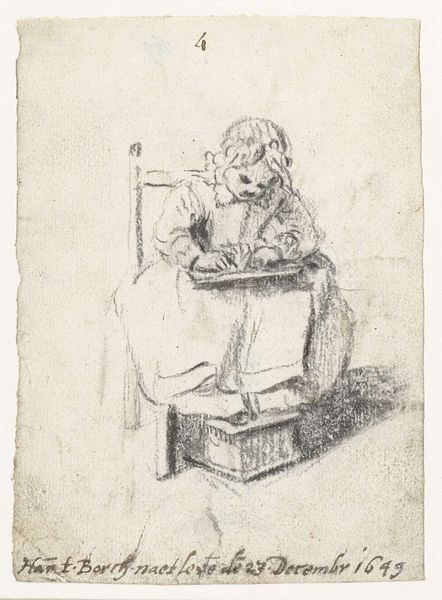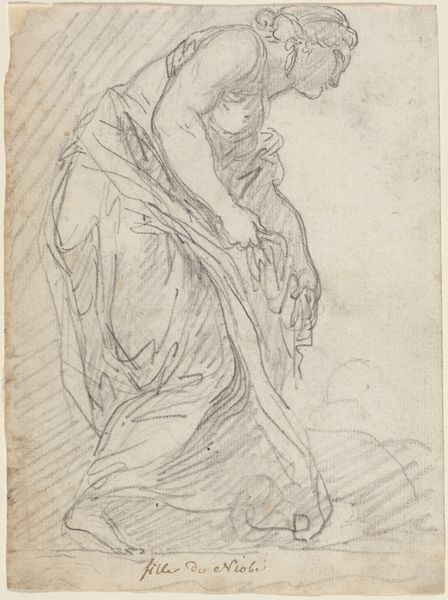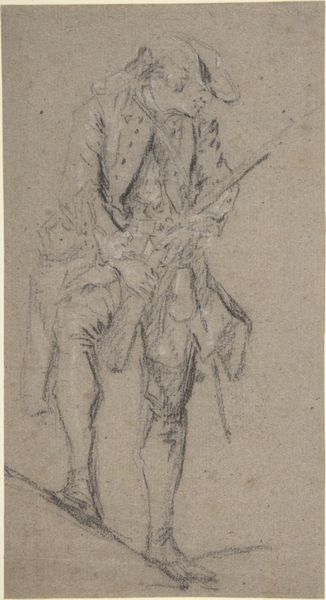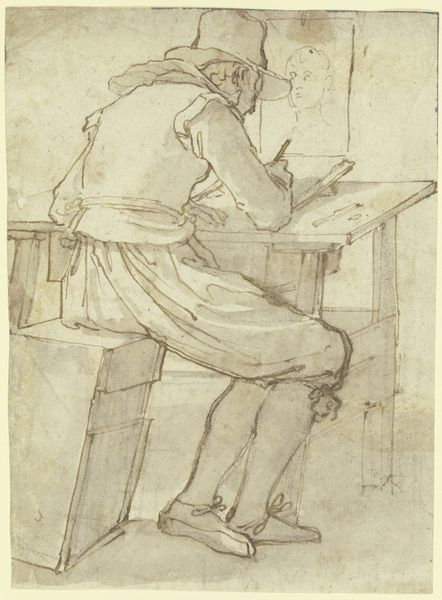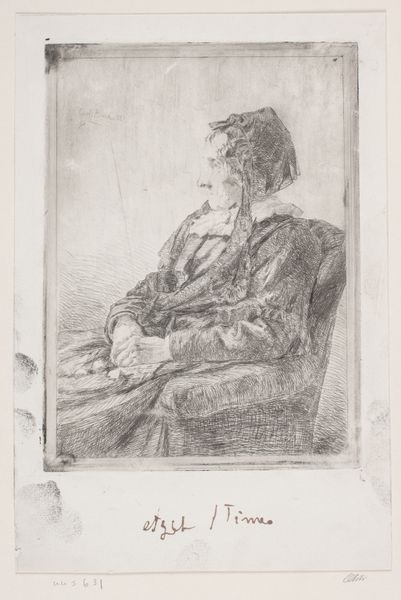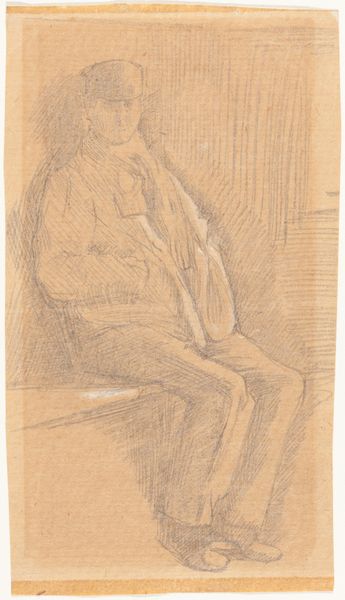
Dimensions: 485 × 296 mm
Copyright: Public Domain
Curator: Let’s spend a moment with "A Woodman Seated on a Bundle of Faggots," a drawing by Thomas Gainsborough, created around 1787. Editor: It’s instantly melancholic. The grey washes and soft charcoal lines give the figure a weary, almost ghostly presence. The limited palette emphasizes texture over vibrant hues. Curator: Gainsborough often explored the symbolic relationship between humans and nature. Here, the woodman is both a part of and apart from the woods. He’s surrounded by its fruits, yet isolated, seemingly burdened by its bounty. His traditional garments remind me of familiar folklore characters. Editor: The loose strokes convey a sense of immediacy. The composition seems to prioritize capturing a fleeting moment, rather than painstaking detail. Notice how Gainsborough leaves much of the ground undefined, placing emphasis instead on the posture and worn visage of the sitter. Curator: Absolutely. And there’s a tradition of depicting figures from rural life, like woodcutters, as representative of the broader socio-economic struggles. This representation elevates an individual to embody something greater – perhaps the universal plight of labor. Editor: You know, this style contrasts sharply with Gainsborough's more polished portraits of the elite. There is a sense of unidealized humanity, but the work appears incomplete. It feels more spontaneous and expressive, almost Romantic in its mood. Curator: Consider also that these are the years of the Enlightenment's wane. Symbolically, the figure reminds me of older archetypes; it acknowledges an older system on the brink. Gainsborough might suggest an entire value system connected to natural life in transition. Editor: In this case, that suggestion comes from the figure, not necessarily its setting. Gainsborough deftly uses contrasting strokes of darkness and chalk highlights to make a palpable rendering of texture. This makes it an image of contrasts between decay and beauty. Curator: Seeing how Gainsborough combined black chalk, pencil, and gouache truly brings out these nuances, doesn't it? His deliberate blurring of lines echoes the era's philosophical shifts, its increasing recognition of nuance. Editor: Definitely. Gainsborough’s skill lies not just in his mastery of technique, but his ability to use visual components to invite viewers into a deeper conversation. Curator: Precisely, it leaves one contemplating the weight of his experience. Editor: And a certain ambiguity; are we glimpsing his history or simply witnessing a transient pose? Both invite quiet contemplation.
Comments
No comments
Be the first to comment and join the conversation on the ultimate creative platform.
